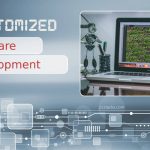Employee engagement and retention are critical factors in building a successful and sustainable organization. One of the most effective ways to enhance both is by implementing performance review software. By streamlining feedback, aligning individual goals with organizational priorities, and creating a culture of regular communication, performance review software becomes a powerful tool for improving employee satisfaction and loyalty.
Table of Contents
Understanding the Role of Performance Review Software
Performance review software is more than just a digital replacement for annual evaluations. It provides a structured, ongoing method to manage performance and offer real-time feedback. When used effectively, it contributes to a more transparent and productive workplace environment, which in turn boosts both engagement and retention.
The key lies in how the software is leveraged. Organizations need to move beyond merely automating forms—it’s about using the tool to facilitate meaningful communication and development.
Key Benefits for Employee Engagement and Retention
- Continuous Feedback: Employees value frequent and constructive feedback. With performance review software, managers can provide timely input that reinforces positive behavior and guides improvement.
- Goal Alignment: Software platforms allow individuals to align their personal objectives with team and organizational goals, fostering a sense of purpose and direction.
- Career Development Tracking: By documenting accomplishments and training, employees see a clearer path for growth, enhancing motivation and reducing turnover.
- Recognition and Rewards: Tracking contributions throughout the year makes it easier to identify and reward high performers appropriately.
- Data-Driven Insights: Robust analytics provide HR and managers with visibility into performance trends, enabling informed decisions regarding coaching or promotions.

Best Practices for Using Performance Review Software
To truly impact engagement and retention, simply adopting software is not enough. It needs to be part of a larger strategy that emphasizes fairness, consistency, and growth.
1. Train Managers and Employees
Proper use of performance review software requires clear understanding. Provide thorough training for both managers and staff to ensure everyone knows how to use the system effectively. This includes how to give and receive feedback constructively and how to set SMART goals.
2. Encourage Regular Check-Ins
Monthly or quarterly check-ins foster better communication than annual reviews alone. The software facilitates these discussions by documenting progress and surfacing issues early. Consistent interactions keep employees engaged and show that their contributions matter.
3. Make Reviews Two-Way Conversations
Encourage employees to actively participate in their reviews. They should reflect on their own performance, express concerns, and set professional development goals with their managers. This collaborative approach builds trust and demonstrates that feedback is a tool for growth—not punishment.

4. Use Data to Personalize Development
Most modern platforms offer detailed analytics on individual and team performance. Use this data to tailor coaching, assign meaningful projects, and identify employees who may be at risk of disengagement or burnout. A proactive approach can make a significant difference in employee retention.
5. Integrate with Broader Talent Management
Performance review systems shouldn’t exist in isolation. Integrate them with learning management, succession planning, and employee engagement tools to build a more holistic approach. When development plans and career paths are visible, employees are more likely to remain invested in the organization.
Choosing the Right Software
There are a wide variety of performance review software solutions on the market. Consider the following factors when selecting one for your organization:
- User-Friendly Interface: The tool should be intuitive for both managers and employees.
- Customization Options: Look for software that aligns with your company’s unique review processes and culture.
- Integration Capabilities: Ensure it can connect with your existing HR systems and tools.
- Robust Reporting: Built-in analytics are essential for gaining actionable insights.
- Mobile Access: With a flexible workforce, mobile functionality helps keep everyone connected.
Conclusion
Performance review software, when used correctly, is one of the most effective tools an organization can deploy to increase employee engagement and improve retention. It empowers staff, strengthens communication, and aligns personal achievement with business success.
By committing to consistent usage, integrating it with broader talent initiatives, and fostering a culture of open feedback, companies can not only hold onto their best talent but also unlock their full potential.




